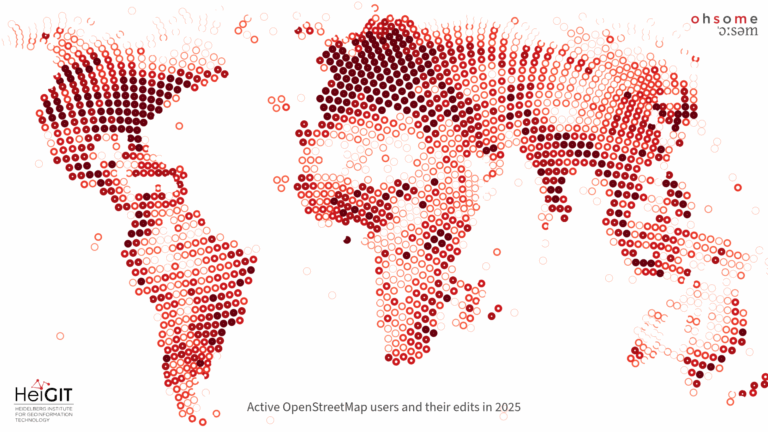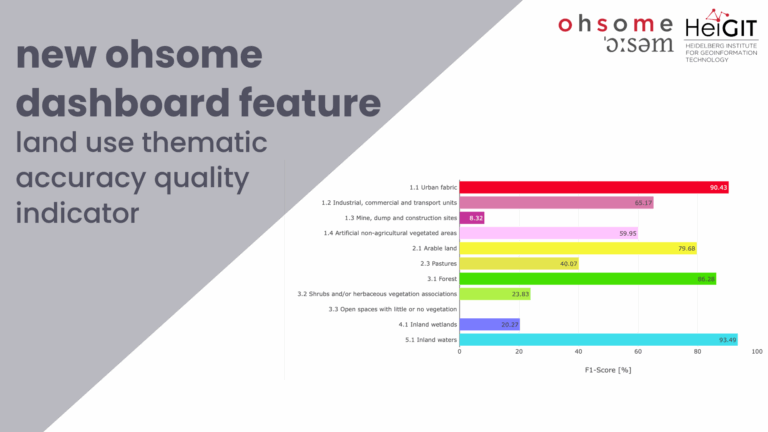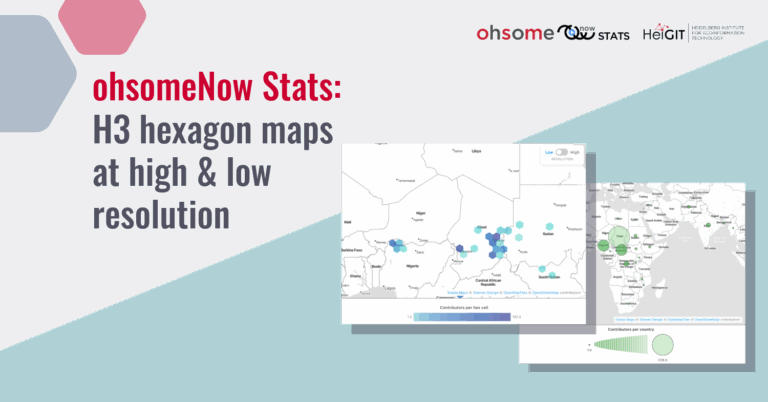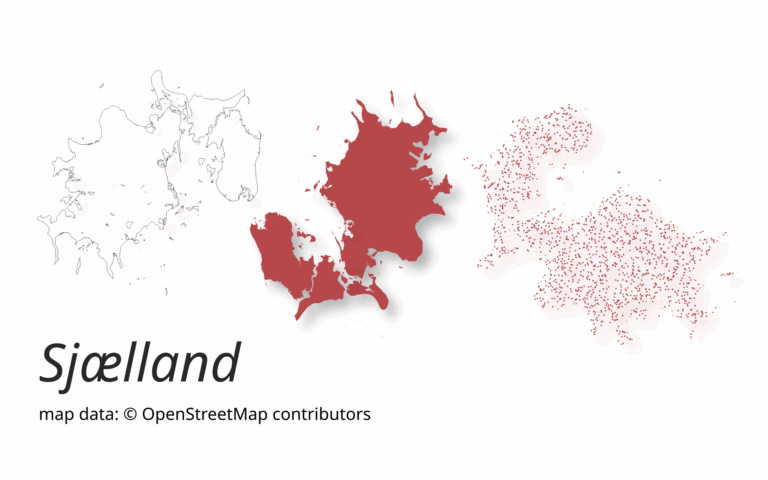In 2020, the Humanitarian OpenStreetMap Team (HOT) received funding from seven donors through TED’s Audacious Project. This has accelerated HOT’s ambition to map an area home to one billion people. HOT is working to add places at high risk of natural disaster or experiencing poverty to OpenStreetMap by significantly scaling-up support for local mapping communities. To help realize this goal, HeiGIT and HOT are working together to enhance HOT’s monitoring, evaluation, reporting, and learning systems to track progress and accelerate growth.
As a part of this monitoring reform, HOT has developed Key Impact Indicators to offer a more comprehensive picture of its contribution towards achieving its global impact goal. This has required developing a complex methodology to analyze the data available on Tasking Manager and other OpenStreetMap (OSM) databases. The goal is to establish a system that draws data against the Key Impact Indicators on a bi-weekly basis. HOT is also exploring ways to automate the data flow and analysis, enabling its regular use in strategic decision-making and sharing knowledge across global initiatives. Making this data available for use in the wider OSM community may help advance socio-economic or humanitarian objectives on a broader scale.
In further support of this aspiration, HeiGIT and HOT are collaborating to extend the Humanitarian OSM Stats platform https://humstats.heigit.org/and processing framework. We are collecting statistics in three key areas:
-
Disaggregation of data by country, organization, and thematic impact area for a geographic area home to 1 billion people
-
Disaggregation of data by country and impact area from 1 million volunteer contributors
-
Monitoring of local edits
HeiGIT, the GIScience Research Group, and HOT are in an ongoing partnership to support the use of OpenStreetMap for humanitarian and disaster management purposes. Other ongoing collaborative projects include the MapSwipe app, the Disaster OpenRouteService, and ohsome (OpenStreetMap History Analytics) platform. HeiGIT and the GIScience Research Group are further supporting HOT through activities related to teaching and outreach as well as through the development of new technologies, skills, workflows and communities.
(image courtesy of GAL Group)
More information about the funding received through TED’s Audacious Project can be found here.
Related research work:
Herfort, B., Lautenbach, S., Porto de Albuquerque, J., Anderson, J., Zipf, A. (2021): The evolution of humanitarian mapping within the OpenStreetMap community. Scientific Reports 11, 3037 (2021). DOI: 10.1038/s41598-021-82404-z
Schott, M., Grinberger, A.Y., Lautenbach, S., Zipf, A. (2021): The Impact of Community Happenings in OpenStreetMap — Establishing a Framework for Online Community Member Activity Analyses. ISPRS Int. J. Geo-Inf. 2021, 10, 164. https://doi.org/10.3390/ijgi10030164
Scholz, S., Knight, P., Eckle, M., Marx, S., Zipf, A. (2018): Volunteered Geographic Information for Disaster Risk Reduction: The Missing Maps Approach and Its Potential within the Red Cross and Red Crescent Movement. Remote Sens., 10(8), 1239, doi: 10.3390/rs10081239.
Porto de Albuquerque, J., B. Herfort, M. Eckle (2016): The Tasks of the Crowd: A Typology of Tasks in Geographic Information Crowdsourcing and a Case Study in Humanitarian Mapping. Remote Sensing. 2016, 8(10), 859; doi:10.3390/rs8100859.





